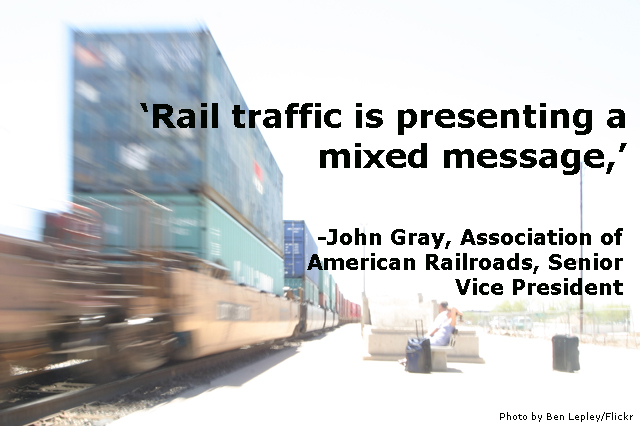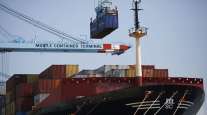Intermodal Rail Traffic Rises to 2007 Level in March


 Association of American Railroads
Association of American RailroadsIntermodal rail traffic rose to a weekly average of 550,291 units in March, the highest weekly average for the month since 2007, the Association of American Railroads reported.
For the month, intermodal volume increased 5.7% to 1.1 million units, compared with the same time last year. Total traffic increased 0.8% to 2.2 million units, AAR said April 1 in its weekly report.
“Like other key economic indicators, rail traffic is presenting a mixed message,” AAR Senior Vice President John Gray said in a statement.
“Rail intermodal traffic rebounded well in March, but many carload commodities did not. Coal is facing a number of headwinds. There are risks going forward, to be sure, but for now we see no reason to think that the economy won’t continue its recent pattern of relatively modest growth,” Gray said.
Eight of the 20 commodity groups AAR tracks increased over last year, led by grain at 10.9%.
Excluding coal, carloads declined 1.2% in March from the same time last year. Excluding coal and grain, carloads declined 2.8% last month, according to AAR.
For the first three months of the year, intermodal traffic increased 0.1% to 3 million units and carload traffic rose 0.3% to 3.4 million.
Intermodal container traffic for the week ended March 28 increased 5% to 278,345 units. Rail carload volume, which excludes intermodal units, declined 5.6% year-over-year to 284,935 carloads.
Intermodal volume on 13 reporting U.S., Canadian and Mexican railroads increased 6.5% to 352,189 trailers and containers.
Canadian railroads moved 63,365 intermodal units, a 13.4% increase. Mexican rail moved 10,479 units, a 9.2% rise from the same time last year.




